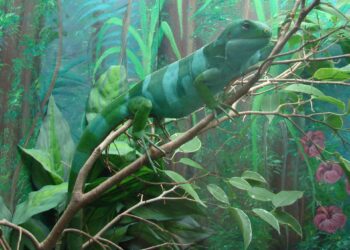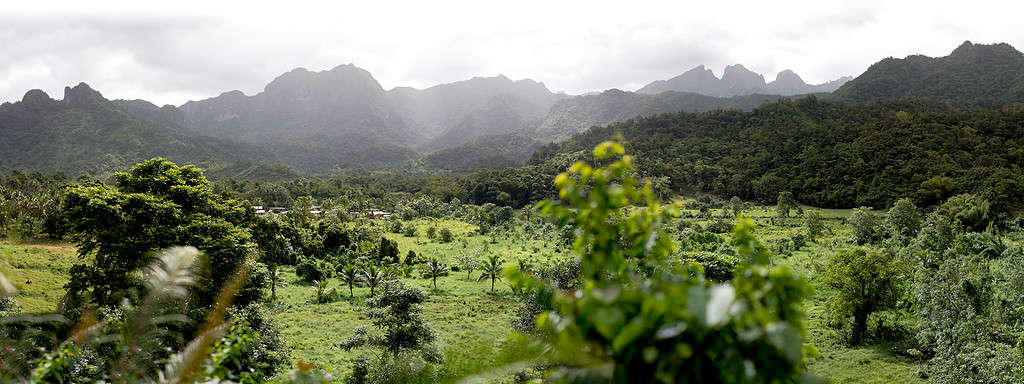
In 1934, a comprehensive scientific expedition called the Mangarevan expedition analyzed the natural history of the farthest southeastern islands of Polynesia. Among the many species discovered by the expedition were three tiny (4 mm long), orange-brown solitary bees found on tahetahe flowers in the Tuamotu Archipelago.
No one paid much attention to these bees for three decades, until bee specialist Prof Charles Michener examined them. He described them as a species new to science: Hylaeus tuamotuensis, or Tuamotu’s masked bee.
But there was a problem. This bee’s closest relatives lived in Australia, New Guinea, and New Zealand, more than 3,000 km west of Tuamotu. How could this small bee have made such a long trip? To make things even more confusing, no other related bee species was discovered on the island or nearby islands. If the bee had any relatives, why couldn’t anyone find them?
It all made for a confusing and tantalizing mystery. Now, that mystery has been solved — and the answer was literally above everyone’s heads, in the canopy.
The bees buzzed above our heads
The Tuamotu Archipelago consists of several groups of small islands and corals east of Fiji, Samoa, and the the Cook Islands. They’re all coral “low islands”: essentially high sand bars built upon coral reefs. They host around 15,000 people across about 80 islands.
The landscape on the islands can be remarkably diverse, with open areas as well as a rich, lush canopy. But researchers weren’t looking high in the canopy for bees — that’s not the standard practice. And then James Dorey, a lecturer at the University of Wollongong and an adjunct lecturer at Flinders University, had an idea.
He learned from his time working in Australia that increasing the sampling height was a good idea, Dorey tells ZME Science.
“While Australia does have tall rainforests, like Fiji, most of the landscape is dominated by our native gum trees. These trees attract a huge host of bees and other insects and really seem to be a cornerstone in the diet of many Australian pollinators. Often, I could only reach lower flowers and at least on one occasion I had to jump to even reach those (and sprained my ankle while in the field because I landed on a rock). So, something clearly needed to change. “
Initially, he got a 5-meter net, but it was too heavy and slow — and not long enough. Then, he got a lighter 11-meter net. With it, he was able to show that not only is Hylaeus tuamotuensis not extinct; but it’s got several relatives nearby as well.
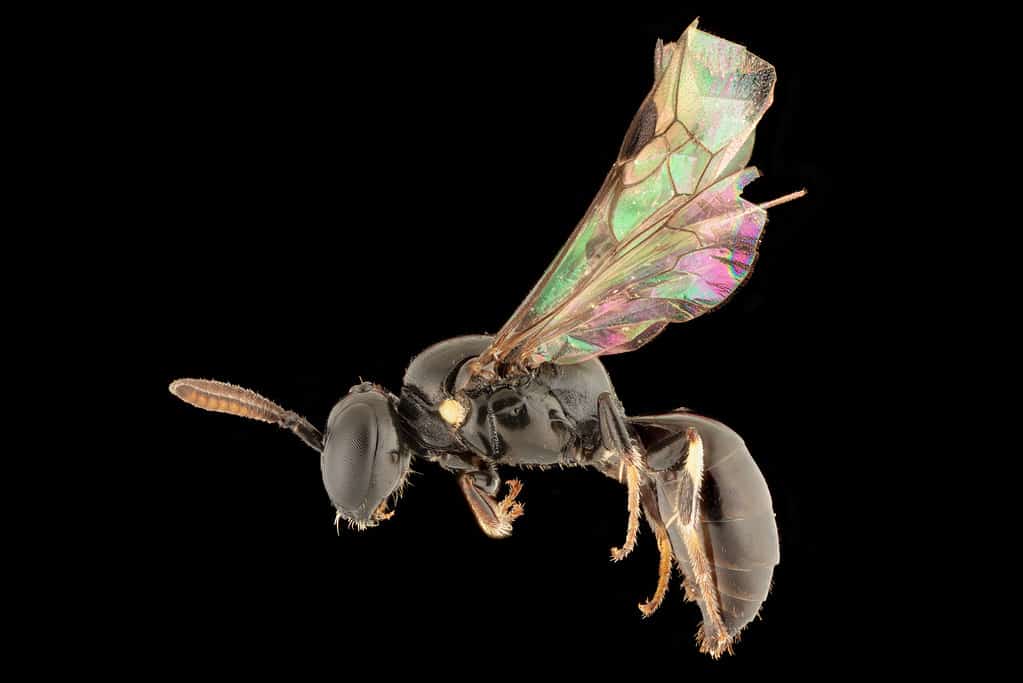
It’s a seemingly small change, but changing the way things have traditionally been done is rarely simple. Armed with this idea of searching for bees in the tall canopy (and armed with a long net as well), researchers were able to find several bees in Tuamotu and neighboring islands.
“Here we show that, despite almost a decade of sampling for bees in Fiji, there is a whole group of species that flew right over our heads until now. By exploring new sampling techniques, we discovered an unknown species radiation of Hylaeus masked bees in the forest canopy,” the researcher said.
“With these bees we can solve the mystery: the ancestors of H. tuamotuensis reached French Polynesia by island-hopping via Fiji and the southwest Pacific!”
Island hopping
The Island Hopping Theory, also known as the stepping-stone model, is a concept in biogeography that explains how species migrate from one large landmass to another by crossing shorter distances over a chain of islands.
This theory suggests that organisms spread to new areas by moving progressively over available islands, which serve as “stepping stones,” thereby reducing the distance and difficulty of dispersal across vast oceanic barriers. It highlights the importance of islands as intermediary stops that facilitate the spread of species across geographically isolated environments.
In between Fiji and French Polynesia, there are hundreds of small islands. Now, scientists know that in the canopy, they can find more Hylaeus species on those islands. In total, they found eight new related bees.
But how does a bee that can likely only fly a few kilometers make it across such a large archipelago?
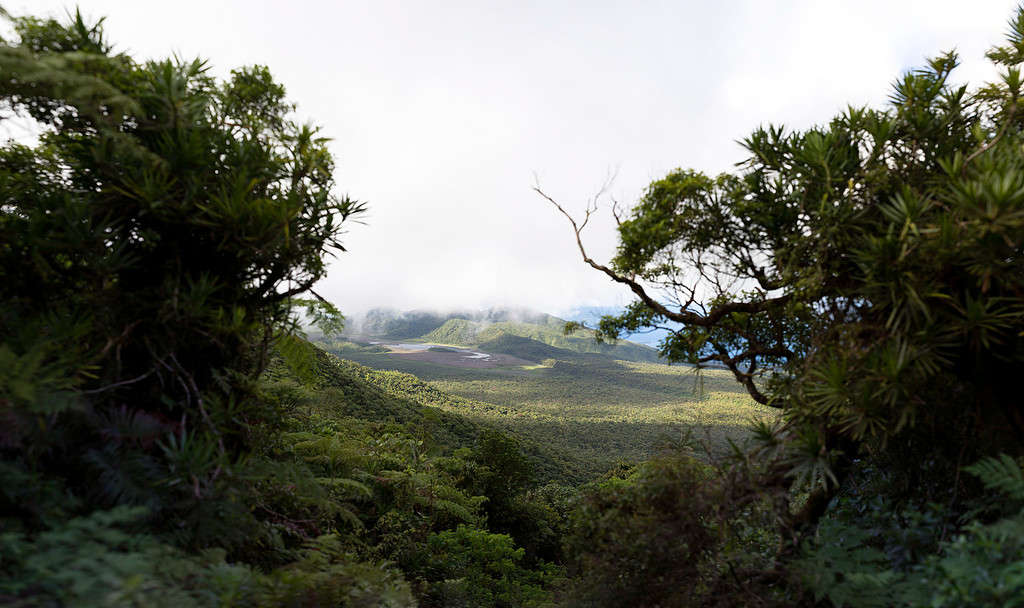
The answer is once again in the wood. Most such bees make nests in wood, so when a large tropical cyclone hits, it can sweep masses of wood over large distances. Then, once at sea, some fortunate bees could raft all the way to a different island.
“The secret probably lies in how they nest. Usually, they nest in the dead stems of branches, surrounded by a cellophane-like seal which might provide protection from outside forces and chemicals (like seawater). But this is so far just conjecture. It’s easy to imagine how, with frequent tropical cyclones, nest-containing dead branches in the canopy got broken off and washed down rivers and out to sea on rafts of driftwood. Such rafts are often hypothesised to be the vectors of life between remote oceanic islands. The Pacific is also full of islands that are often hundreds of kilometres apart but that could serve as stepping stones for rafting bees.”
“It is also possible that they were blown by high winds, but that would have been a much more perilous journey for our little bees,” said Dorey.
A global bee discovered through local collaboration
The bee genus Hylaeus (the masked bees) is one of the few with a global distribution, which is a testament to their dispersal abilities, says Dorey.
But we would never have found this out had it not been for local help.
“This work would not have been possible without international collaborations. Firstly, our lab has a long history of working with the University of the South Pacific and especially our collaborator there, Marika Tuiwawa. We also have a great relationship with the people of Navai village, where we have stayed on most of our trips and enjoyed their local knowledge and their friendship; this is why we named one of the species in recognition of their contributions.”
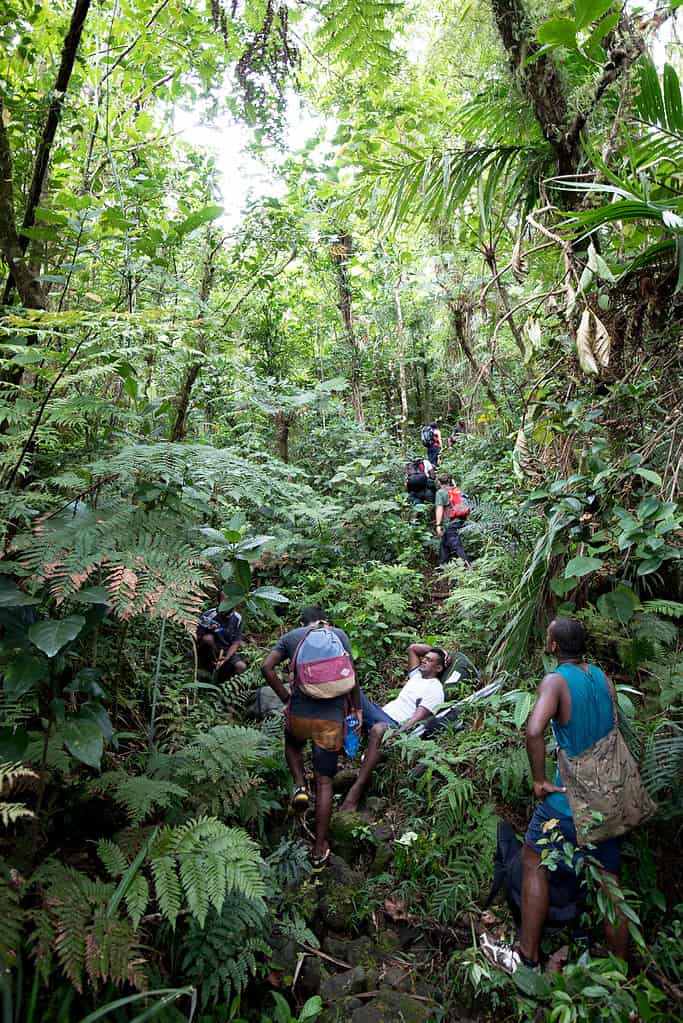
Despite this contribution, we know very little about these bees — and all canopy bees, actually. Many of them are threatened by changing climate. And we’re not even sure how much trouble they are in because we only started looking for them relatively recently.
“We know very little about these bees and the same is true for most canopy bees. But on Fiji, things are slightly complicated by the fact that the other native genus, the ground-nesting Homalictus, loves open habitats. In the highlands, many of the Homalictus species are threatened with changing climates. So, understanding the habitats and ecology of both groups would go a long way to understanding how we can conserve them both without harming the other.”
There’s plenty left to be discovered in the Pacific and great potential to better understand these insects and their ecosystems.
But for now, there are no solid plans for another expedition in the Pacific. Funding is the biggest problem, but if the research team can attract more funding, they can start working on finding new species and new connections between them, exploring the connections between them and the “incredible journeys that these tiny bees have made over thousands of years,” Dorey mentions.
There’s another reason to continue the research.
“Local knowledge has made our work possible and I would like to train people in the Pacific to continue these works themselves,” Dorey concludes.


